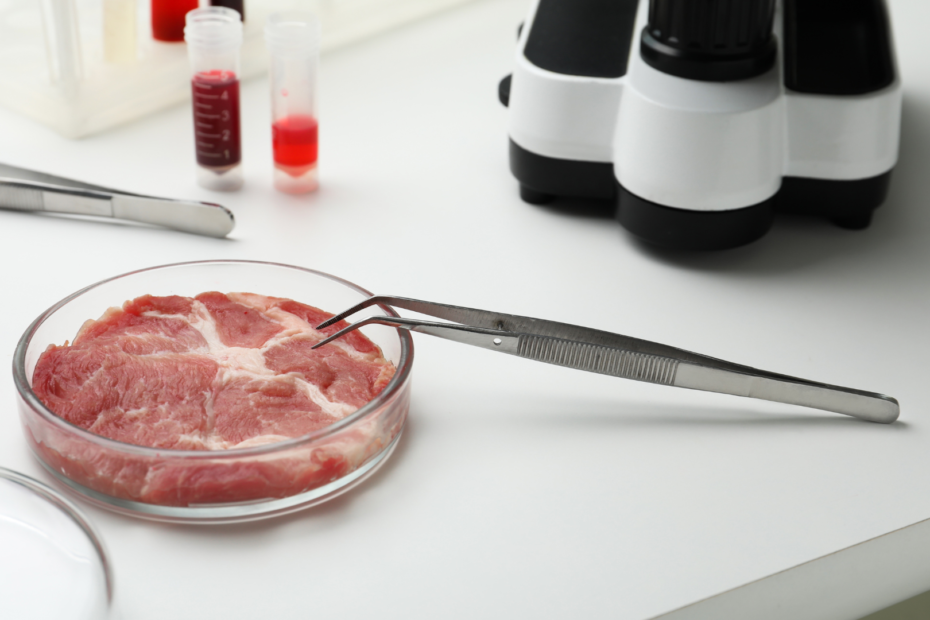Welcome to the future of food! Imagine a world where we can satisfy our craving for meat without harming any animals while at the same time reducing greenhouse gas emissions and preserving natural resources. This might sound like science fiction, but it’s happening right now, thanks to cultured meat.
In this blog post, we will explore the fascinating process behind lab-grown meat and why it has become an important topic today. Whether we are curious consumers or simply interested in the latest scientific breakthroughs, join us on a journey from lab to a plate as we explore the exciting frontier of cultured meat.
What is Cultured Meat?
Cultured meat is a type of meat that is grown in a lab rather than harvested from an animal. A team of highly skilled scientists equipped with the necessary tools and furniture, perhaps from this manufacturer, cultivate cultured meat by using cell cultures derived from animals. This innovative process involves replicating the natural growth of muscle tissue, enabling the production of meat without the need to raise and slaughter animals.
Culturing meat entails taking cells from an animal and growing them into cells with the same properties as muscle tissue. This means that cultured meat can be made to look, feel, and taste like traditional meat. While there are various methods to create cultured meat, one of the most common approaches is to take stem cells from an animal and grow them into muscle cells. Once these muscle cells have matured, they can be cut into small pieces and used in food products.
How is Cultured Meat Made?
Cultured meat is produced by extracting stem cells from a live animal and cultivating them in a controlled environment until they develop into the tissue of the meat product. These cells are placed in a bioreactor where they receive nutrients and oxygen, mimicking the conditions of a live animal. This method yields meat that is not only healthier but also more environmentally sustainable.
After the cultured meats are produced, they undergo proper storage procedures at a food storage center. These facilities, equipped with technologies like Commercial Refrigeration from Welch Refrigeration or another reputable company, tend to ensure that the meats are stored at optimal temperatures and hygienic conditions, maintaining their quality and safety.
The Benefits of Cultured Meat
The benefits of cultured meat are numerous and include environmental sustainability, food safety, animal welfare, and increased crop yields. Culturing meat involves growing cells in a controlled environment instead of raising animals traditionally. This results in a product that is less environmentally impactful and more humane.
Cultured meat also has significant safety advantages over conventional meat. For example, cultured meat contains no harmful pathogens or bacteria that can make people sick.
Furthermore, cultured meat does not require antibiotics to remain safe for human consumption. This means it could be a more sustainable option for raising livestock because it would reduce the drugs needed to keep food safe.
As cultured meat becomes more popular, there is increasing demand for products made using this technology. This has led to the development of cultured dairy products and even cultured fish, which have already begun to enter the market.
Overall, cultured meat is a promising technology that has the potential to revolutionize the way we eat and produce food. It has many benefits that make it an attractive option for consumers, and its growth could significantly impact the food industry.
The Risks of Cultured Meat
Cultured meat is meat that has been grown in a controlled environment using animal cells or tissue that has been extracted from an animal. This type of meat is considered a more environmentally friendly option, as it does not require using animals raised for their flesh.
However, there are some risks associated with cultured meat.
One issue with cultured meat is that it is still a relatively new technology. There is no guarantee that the process will replicate real meat’s texture, flavor, and other characteristics. Additionally, there are potential safety concerns related to the manufacturing process. For example, if cells are not properly cultured or become contaminated during production, they could cause foodborne illness.
Another risk associated with cultured meat is its price. While cultured meat may be more sustainable than traditional meat products, it may still be expensive. If cultured meat becomes too expensive, people may opt for less sustainable protein sources.
Overall, some risks are associated with cultured meat, but the technology is still in its early stages. As technology improves and companies develop more reliable methods of production, the risks may also decrease.
Path to a Sustainable Future With Cultured Meat
The feasibility of cultured meat has been discussed for a while, but the potential benefits are still largely unrealized. With so many people looking to eat more sustainable and ethically-conscious food, cultured meat is an ideal solution. Not only does it have the ability to alleviate world hunger, but it also has the potential to reduce our reliance on animal agriculture.
While there are still many hurdles to clear before cultured meat becomes a mainstream staple, we hope that this article has provided enough information to make an informed decision about whether or not cultured meat is something we should be investing in.
